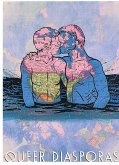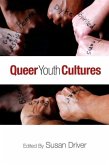- Gebundenes Buch
- Merkliste
- Auf die Merkliste
- Bewerten Bewerten
- Teilen
- Produkt teilen
- Produkterinnerung
- Produkterinnerung
Bruno Perreau is Cynthia L. Reed Professor and Associate Professor of French Studies at MIT. He is the author of The Politics of Adoption (2014).
Andere Kunden interessierten sich auch für
![Pink and the Black Pink and the Black]() Frédéric MartelPink and the Black180,99 €
Frédéric MartelPink and the Black180,99 €![Independence Park Independence Park]() FinkIndependence Park191,99 €
FinkIndependence Park191,99 €![Queer Palestine and the Empire of Critique Queer Palestine and the Empire of Critique]() Sa'ed AtshanQueer Palestine and the Empire of Critique132,99 €
Sa'ed AtshanQueer Palestine and the Empire of Critique132,99 €![Virtual Intimacies: Media, Affect, and Queer Sociality Virtual Intimacies: Media, Affect, and Queer Sociality]() Shaka McGlottenVirtual Intimacies: Media, Affect, and Queer Sociality109,99 €
Shaka McGlottenVirtual Intimacies: Media, Affect, and Queer Sociality109,99 €![Queer Diasporas Queer Diasporas]() Queer Diasporas122,99 €
Queer Diasporas122,99 €![Queer Externalities: Hazardous Encounters in American Culture Queer Externalities: Hazardous Encounters in American Culture]() W. C. HarrisQueer Externalities: Hazardous Encounters in American Culture109,99 €
W. C. HarrisQueer Externalities: Hazardous Encounters in American Culture109,99 €![Queer Youth Cultures Queer Youth Cultures]() Queer Youth Cultures109,99 €
Queer Youth Cultures109,99 €-
-
-
Bruno Perreau is Cynthia L. Reed Professor and Associate Professor of French Studies at MIT. He is the author of The Politics of Adoption (2014).
Hinweis: Dieser Artikel kann nur an eine deutsche Lieferadresse ausgeliefert werden.
Hinweis: Dieser Artikel kann nur an eine deutsche Lieferadresse ausgeliefert werden.
Produktdetails
- Produktdetails
- Verlag: Stanford University Press
- Seitenzahl: 288
- Erscheinungstermin: 16. November 2016
- Englisch
- Abmessung: 229mm x 152mm x 20mm
- Gewicht: 544g
- ISBN-13: 9780804798860
- ISBN-10: 0804798869
- Artikelnr.: 45002102
- Herstellerkennzeichnung
- Libri GmbH
- Europaallee 1
- 36244 Bad Hersfeld
- gpsr@libri.de
- Verlag: Stanford University Press
- Seitenzahl: 288
- Erscheinungstermin: 16. November 2016
- Englisch
- Abmessung: 229mm x 152mm x 20mm
- Gewicht: 544g
- ISBN-13: 9780804798860
- ISBN-10: 0804798869
- Artikelnr.: 45002102
- Herstellerkennzeichnung
- Libri GmbH
- Europaallee 1
- 36244 Bad Hersfeld
- gpsr@libri.de
Bruno Perreau is Cynthia L. Reed Professor and Associate Professor of French Studies at MIT. He is the author of The Politics of Adoption (2014).
Contents and Abstracts
Introduction
chapter abstract
The notion of gender was debated in France long before the 2013 law on
marriage equality. In 2004, a mayor in the south of France celebrated the
first gay marriage. One year later, a court denied two trans women the
right to marry because they did not behave as husband and wife. The
introduction locates public debates on gender in France, and shows that
they have heavily weighed on the 2013 law, which maintains discriminations
against LGBT people with regard to parenthood, trans rights, and
nationality. From this standpoint, France has experienced no clear
"before-and-after" watershed. French conservatives indeed see themselves as
majority victims of a system devised to benefit minorities. They credit the
idea that LGBT rights are the product of a "theory" to legitimize their own
doctrine. References to the United States become all the more potent since
they accredit the idea of a foreign plot.
1Who's Afraid of "Gender Theory"?
chapter abstract
The first chapter deals with manifestations of opposition to gay marriage
in France: roots, organization, activist tactics (street demonstrations,
posters, social media), and discourse. It shows how opposition to the
concept of gender arose in the Vatican during the Fourth World Conference
on Women held in Beijing in 1995, and was then developed under the label of
"human ecology." Catholic parents' associations protested against gender
equality and non-traditional gender roles in school programs. Chapter 1
shows that demonstrators, such as La Manif pour tous, played simultaneously
on fear of the enemy within (by establishing a parallel between Judaism and
homosexuality) and on racism (by placing sexual minorities in the same
category as foreign, uncivilized freaks). They notably targeted the French
Minister of Justice, Christiane Taubira, because she is a black woman from
French Guiana and the author of a law that made slavery a crime against
humanity.
2The Many Meanings of Queer
chapter abstract
The second chapter examines how queer theory was variously employed in
France. Queer theory arrived in France in the early 1990s thanks to several
French activist groups-such as ACT UP Paris and Sisters of Perpetual
Indulgence. The 1990s were also marked by research seminars that trained a
new generation of scholars but also promoted the translation of American
publications. Chapter 2 shows that the English word queer, previously
meaningless in French, has become more common. Use of the term nevertheless
remains ambiguous. It enables certain radical activists to distinguish
themselves from an institutional LGBT culture. But queer is also adopted by
the mass media, to find new audiences without offending their traditional
ones. Chapter 2 ends up with Les Tordu(e)s, a group that organized an
alternative event to the official Pride parade, and a student movement
called Queer Week at the elite university Sciences Po.
3Transatlantic Homecomings
chapter abstract
Chapter 3 addresses one of the most controversial debates among queer
movements and theorists across the Atlantic today, concerning
homonationalism and gay imperialism, which both refer to an
instrumentalization of the gay and lesbian agenda to the benefit of
nationalist and racist policies. Although the critique may be valid, in its
current form it turns out to be contradictory in so far as it
re-essentializes sexual categories (the "homo" in homonationalism) and
dismisses hybrid identities forged across the north/south divide. Chapter 3
provides the critical tools to counteract excessive drift of these
concepts. It examines the rise of the far right in France, the
transatlantic fantasy of a global theory of sexuality, the limits of
intersectionality, and the fear of the ordinary in queer studies. Chapter 3
shows that minority claims are not a synonym for local claims, opening new
ways to resist oppression in a global context.
4The Specter of Queer Politics
chapter abstract
Chapter 4 analyzes political resistance to queer theory in France. It
traces the fear of homosexual betrayal since the First World War, and shows
that the fantasy of betrayal is now echoed in the left-wing ideals
underpinning the French Republic. It examines more specifically the role of
France's socialist party in the development of an "anti-communitarian"
discourse. In this context, several philosophers-notably Maurice Blanchot
and Jean-Luc Nancy-have strived to rethink the notion of "common." They
argue that a community always escapes all attempts to grasp it, since we
have only death in common. Chapter 4 argues that minorities do not have the
luxury of disavowing their sense of belonging. In the wake of Didier
Eribon's work, it suggests that "community" is not a constantly receding
horizon but a critical return to an experienced event.
Conclusion
chapter abstract
Debate over queer theory in France is not a carbon copy of the one in
America. Nor can it be encapsulated as a strategy of empowerment vis-à-vis
the nationalist trend of sexual politics in France. The conclusion argues
that queer theory destabilizes the very concepts of global and local in so
far as it sheds light on the concomitance of affiliation and disaffiliation
with the group. It muddies the picture of a national sense of belonging.
Whereas the nation-state seeks to objectivize the framework of citizenship
by linking genealogy ("vertical" affiliation to a lineage) to community
("horizontal" affiliation to a group), queer theory views kinship as a way
of simultaneously belonging and not belonging.
Introduction
chapter abstract
The notion of gender was debated in France long before the 2013 law on
marriage equality. In 2004, a mayor in the south of France celebrated the
first gay marriage. One year later, a court denied two trans women the
right to marry because they did not behave as husband and wife. The
introduction locates public debates on gender in France, and shows that
they have heavily weighed on the 2013 law, which maintains discriminations
against LGBT people with regard to parenthood, trans rights, and
nationality. From this standpoint, France has experienced no clear
"before-and-after" watershed. French conservatives indeed see themselves as
majority victims of a system devised to benefit minorities. They credit the
idea that LGBT rights are the product of a "theory" to legitimize their own
doctrine. References to the United States become all the more potent since
they accredit the idea of a foreign plot.
1Who's Afraid of "Gender Theory"?
chapter abstract
The first chapter deals with manifestations of opposition to gay marriage
in France: roots, organization, activist tactics (street demonstrations,
posters, social media), and discourse. It shows how opposition to the
concept of gender arose in the Vatican during the Fourth World Conference
on Women held in Beijing in 1995, and was then developed under the label of
"human ecology." Catholic parents' associations protested against gender
equality and non-traditional gender roles in school programs. Chapter 1
shows that demonstrators, such as La Manif pour tous, played simultaneously
on fear of the enemy within (by establishing a parallel between Judaism and
homosexuality) and on racism (by placing sexual minorities in the same
category as foreign, uncivilized freaks). They notably targeted the French
Minister of Justice, Christiane Taubira, because she is a black woman from
French Guiana and the author of a law that made slavery a crime against
humanity.
2The Many Meanings of Queer
chapter abstract
The second chapter examines how queer theory was variously employed in
France. Queer theory arrived in France in the early 1990s thanks to several
French activist groups-such as ACT UP Paris and Sisters of Perpetual
Indulgence. The 1990s were also marked by research seminars that trained a
new generation of scholars but also promoted the translation of American
publications. Chapter 2 shows that the English word queer, previously
meaningless in French, has become more common. Use of the term nevertheless
remains ambiguous. It enables certain radical activists to distinguish
themselves from an institutional LGBT culture. But queer is also adopted by
the mass media, to find new audiences without offending their traditional
ones. Chapter 2 ends up with Les Tordu(e)s, a group that organized an
alternative event to the official Pride parade, and a student movement
called Queer Week at the elite university Sciences Po.
3Transatlantic Homecomings
chapter abstract
Chapter 3 addresses one of the most controversial debates among queer
movements and theorists across the Atlantic today, concerning
homonationalism and gay imperialism, which both refer to an
instrumentalization of the gay and lesbian agenda to the benefit of
nationalist and racist policies. Although the critique may be valid, in its
current form it turns out to be contradictory in so far as it
re-essentializes sexual categories (the "homo" in homonationalism) and
dismisses hybrid identities forged across the north/south divide. Chapter 3
provides the critical tools to counteract excessive drift of these
concepts. It examines the rise of the far right in France, the
transatlantic fantasy of a global theory of sexuality, the limits of
intersectionality, and the fear of the ordinary in queer studies. Chapter 3
shows that minority claims are not a synonym for local claims, opening new
ways to resist oppression in a global context.
4The Specter of Queer Politics
chapter abstract
Chapter 4 analyzes political resistance to queer theory in France. It
traces the fear of homosexual betrayal since the First World War, and shows
that the fantasy of betrayal is now echoed in the left-wing ideals
underpinning the French Republic. It examines more specifically the role of
France's socialist party in the development of an "anti-communitarian"
discourse. In this context, several philosophers-notably Maurice Blanchot
and Jean-Luc Nancy-have strived to rethink the notion of "common." They
argue that a community always escapes all attempts to grasp it, since we
have only death in common. Chapter 4 argues that minorities do not have the
luxury of disavowing their sense of belonging. In the wake of Didier
Eribon's work, it suggests that "community" is not a constantly receding
horizon but a critical return to an experienced event.
Conclusion
chapter abstract
Debate over queer theory in France is not a carbon copy of the one in
America. Nor can it be encapsulated as a strategy of empowerment vis-à-vis
the nationalist trend of sexual politics in France. The conclusion argues
that queer theory destabilizes the very concepts of global and local in so
far as it sheds light on the concomitance of affiliation and disaffiliation
with the group. It muddies the picture of a national sense of belonging.
Whereas the nation-state seeks to objectivize the framework of citizenship
by linking genealogy ("vertical" affiliation to a lineage) to community
("horizontal" affiliation to a group), queer theory views kinship as a way
of simultaneously belonging and not belonging.
Contents and Abstracts
Introduction
chapter abstract
The notion of gender was debated in France long before the 2013 law on
marriage equality. In 2004, a mayor in the south of France celebrated the
first gay marriage. One year later, a court denied two trans women the
right to marry because they did not behave as husband and wife. The
introduction locates public debates on gender in France, and shows that
they have heavily weighed on the 2013 law, which maintains discriminations
against LGBT people with regard to parenthood, trans rights, and
nationality. From this standpoint, France has experienced no clear
"before-and-after" watershed. French conservatives indeed see themselves as
majority victims of a system devised to benefit minorities. They credit the
idea that LGBT rights are the product of a "theory" to legitimize their own
doctrine. References to the United States become all the more potent since
they accredit the idea of a foreign plot.
1Who's Afraid of "Gender Theory"?
chapter abstract
The first chapter deals with manifestations of opposition to gay marriage
in France: roots, organization, activist tactics (street demonstrations,
posters, social media), and discourse. It shows how opposition to the
concept of gender arose in the Vatican during the Fourth World Conference
on Women held in Beijing in 1995, and was then developed under the label of
"human ecology." Catholic parents' associations protested against gender
equality and non-traditional gender roles in school programs. Chapter 1
shows that demonstrators, such as La Manif pour tous, played simultaneously
on fear of the enemy within (by establishing a parallel between Judaism and
homosexuality) and on racism (by placing sexual minorities in the same
category as foreign, uncivilized freaks). They notably targeted the French
Minister of Justice, Christiane Taubira, because she is a black woman from
French Guiana and the author of a law that made slavery a crime against
humanity.
2The Many Meanings of Queer
chapter abstract
The second chapter examines how queer theory was variously employed in
France. Queer theory arrived in France in the early 1990s thanks to several
French activist groups-such as ACT UP Paris and Sisters of Perpetual
Indulgence. The 1990s were also marked by research seminars that trained a
new generation of scholars but also promoted the translation of American
publications. Chapter 2 shows that the English word queer, previously
meaningless in French, has become more common. Use of the term nevertheless
remains ambiguous. It enables certain radical activists to distinguish
themselves from an institutional LGBT culture. But queer is also adopted by
the mass media, to find new audiences without offending their traditional
ones. Chapter 2 ends up with Les Tordu(e)s, a group that organized an
alternative event to the official Pride parade, and a student movement
called Queer Week at the elite university Sciences Po.
3Transatlantic Homecomings
chapter abstract
Chapter 3 addresses one of the most controversial debates among queer
movements and theorists across the Atlantic today, concerning
homonationalism and gay imperialism, which both refer to an
instrumentalization of the gay and lesbian agenda to the benefit of
nationalist and racist policies. Although the critique may be valid, in its
current form it turns out to be contradictory in so far as it
re-essentializes sexual categories (the "homo" in homonationalism) and
dismisses hybrid identities forged across the north/south divide. Chapter 3
provides the critical tools to counteract excessive drift of these
concepts. It examines the rise of the far right in France, the
transatlantic fantasy of a global theory of sexuality, the limits of
intersectionality, and the fear of the ordinary in queer studies. Chapter 3
shows that minority claims are not a synonym for local claims, opening new
ways to resist oppression in a global context.
4The Specter of Queer Politics
chapter abstract
Chapter 4 analyzes political resistance to queer theory in France. It
traces the fear of homosexual betrayal since the First World War, and shows
that the fantasy of betrayal is now echoed in the left-wing ideals
underpinning the French Republic. It examines more specifically the role of
France's socialist party in the development of an "anti-communitarian"
discourse. In this context, several philosophers-notably Maurice Blanchot
and Jean-Luc Nancy-have strived to rethink the notion of "common." They
argue that a community always escapes all attempts to grasp it, since we
have only death in common. Chapter 4 argues that minorities do not have the
luxury of disavowing their sense of belonging. In the wake of Didier
Eribon's work, it suggests that "community" is not a constantly receding
horizon but a critical return to an experienced event.
Conclusion
chapter abstract
Debate over queer theory in France is not a carbon copy of the one in
America. Nor can it be encapsulated as a strategy of empowerment vis-à-vis
the nationalist trend of sexual politics in France. The conclusion argues
that queer theory destabilizes the very concepts of global and local in so
far as it sheds light on the concomitance of affiliation and disaffiliation
with the group. It muddies the picture of a national sense of belonging.
Whereas the nation-state seeks to objectivize the framework of citizenship
by linking genealogy ("vertical" affiliation to a lineage) to community
("horizontal" affiliation to a group), queer theory views kinship as a way
of simultaneously belonging and not belonging.
Introduction
chapter abstract
The notion of gender was debated in France long before the 2013 law on
marriage equality. In 2004, a mayor in the south of France celebrated the
first gay marriage. One year later, a court denied two trans women the
right to marry because they did not behave as husband and wife. The
introduction locates public debates on gender in France, and shows that
they have heavily weighed on the 2013 law, which maintains discriminations
against LGBT people with regard to parenthood, trans rights, and
nationality. From this standpoint, France has experienced no clear
"before-and-after" watershed. French conservatives indeed see themselves as
majority victims of a system devised to benefit minorities. They credit the
idea that LGBT rights are the product of a "theory" to legitimize their own
doctrine. References to the United States become all the more potent since
they accredit the idea of a foreign plot.
1Who's Afraid of "Gender Theory"?
chapter abstract
The first chapter deals with manifestations of opposition to gay marriage
in France: roots, organization, activist tactics (street demonstrations,
posters, social media), and discourse. It shows how opposition to the
concept of gender arose in the Vatican during the Fourth World Conference
on Women held in Beijing in 1995, and was then developed under the label of
"human ecology." Catholic parents' associations protested against gender
equality and non-traditional gender roles in school programs. Chapter 1
shows that demonstrators, such as La Manif pour tous, played simultaneously
on fear of the enemy within (by establishing a parallel between Judaism and
homosexuality) and on racism (by placing sexual minorities in the same
category as foreign, uncivilized freaks). They notably targeted the French
Minister of Justice, Christiane Taubira, because she is a black woman from
French Guiana and the author of a law that made slavery a crime against
humanity.
2The Many Meanings of Queer
chapter abstract
The second chapter examines how queer theory was variously employed in
France. Queer theory arrived in France in the early 1990s thanks to several
French activist groups-such as ACT UP Paris and Sisters of Perpetual
Indulgence. The 1990s were also marked by research seminars that trained a
new generation of scholars but also promoted the translation of American
publications. Chapter 2 shows that the English word queer, previously
meaningless in French, has become more common. Use of the term nevertheless
remains ambiguous. It enables certain radical activists to distinguish
themselves from an institutional LGBT culture. But queer is also adopted by
the mass media, to find new audiences without offending their traditional
ones. Chapter 2 ends up with Les Tordu(e)s, a group that organized an
alternative event to the official Pride parade, and a student movement
called Queer Week at the elite university Sciences Po.
3Transatlantic Homecomings
chapter abstract
Chapter 3 addresses one of the most controversial debates among queer
movements and theorists across the Atlantic today, concerning
homonationalism and gay imperialism, which both refer to an
instrumentalization of the gay and lesbian agenda to the benefit of
nationalist and racist policies. Although the critique may be valid, in its
current form it turns out to be contradictory in so far as it
re-essentializes sexual categories (the "homo" in homonationalism) and
dismisses hybrid identities forged across the north/south divide. Chapter 3
provides the critical tools to counteract excessive drift of these
concepts. It examines the rise of the far right in France, the
transatlantic fantasy of a global theory of sexuality, the limits of
intersectionality, and the fear of the ordinary in queer studies. Chapter 3
shows that minority claims are not a synonym for local claims, opening new
ways to resist oppression in a global context.
4The Specter of Queer Politics
chapter abstract
Chapter 4 analyzes political resistance to queer theory in France. It
traces the fear of homosexual betrayal since the First World War, and shows
that the fantasy of betrayal is now echoed in the left-wing ideals
underpinning the French Republic. It examines more specifically the role of
France's socialist party in the development of an "anti-communitarian"
discourse. In this context, several philosophers-notably Maurice Blanchot
and Jean-Luc Nancy-have strived to rethink the notion of "common." They
argue that a community always escapes all attempts to grasp it, since we
have only death in common. Chapter 4 argues that minorities do not have the
luxury of disavowing their sense of belonging. In the wake of Didier
Eribon's work, it suggests that "community" is not a constantly receding
horizon but a critical return to an experienced event.
Conclusion
chapter abstract
Debate over queer theory in France is not a carbon copy of the one in
America. Nor can it be encapsulated as a strategy of empowerment vis-à-vis
the nationalist trend of sexual politics in France. The conclusion argues
that queer theory destabilizes the very concepts of global and local in so
far as it sheds light on the concomitance of affiliation and disaffiliation
with the group. It muddies the picture of a national sense of belonging.
Whereas the nation-state seeks to objectivize the framework of citizenship
by linking genealogy ("vertical" affiliation to a lineage) to community
("horizontal" affiliation to a group), queer theory views kinship as a way
of simultaneously belonging and not belonging.








